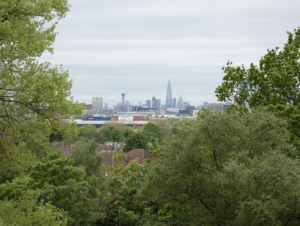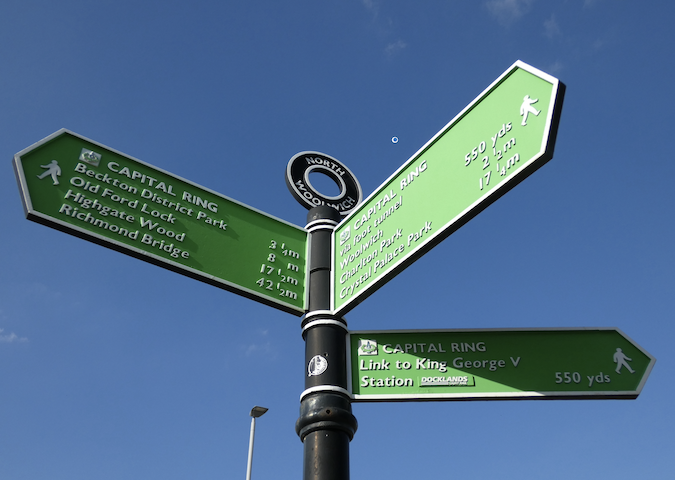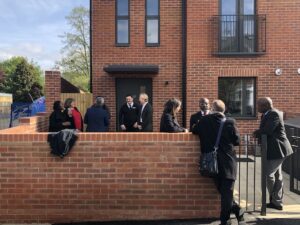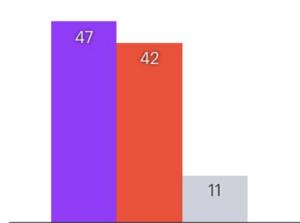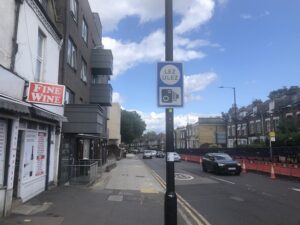A week ago transport secretary Mark Harper published a letter he had sent to Labour Party leader Sir Keir Starmer. In it, he referred to an amendment that had been tabled to the Levelling Up and Regeneration Bill which would, Harper wrote, “ensure that future clean air schemes cannot be introduced in London whilst ignoring the mandate of elected local councillors in London boroughs”. The government, Harper continued, “will support” it.
The context, of course, is Sadiq Khan’s introduction of a further expansion of London’s Ultra-Low Emission Zone (the ULEZ) so that it covers the whole of Greater London. Instant reaction from some to the amendment was unamused, notably from champions of devolution to the Greater London Authority and London’s Mayors, present and future alike. The amendment was seen as being (yet another) assault on the power and autonomy of the mayoralty, simply because the Conservative national government doesn’t like the current Labour incumbent.
Since then, the proposed amendment has been published and can be examined in detail. It is the work of Daniel Moylan, former deputy leader of Kensington & Chelsea and former deputy chair of Transport for London under the mayoralty of Boris Johnson. Moylan, a contributor to this website, is nowadays Lord Moylan. It is in that capacity that he has tabled the amendment in question.
What, then, is it for?
It starts on page 12 of the tabled amendments list and isn’t short. It proposes inserting a clause about “road user charging schemes in London” into the Bill, though it actually relates to the Greater London Authority Act (1999), which brought the Greater London Authority, the Mayor and the London Assembly into being.
Put very simply, the effect of the amendment would be, as Harper indicated, to increase the power of London’s boroughs in relation to that of the Mayor. It would also increase the power of Her Majesty’s Government relative to that of the Mayor. To that extent, the objections of those wanting more devolution to City Hall, not less, appear logical.
The exact significance of the change, should it take place, is less easy to assess. The Moylan amendment relates specifically to Schedule 23 of the GLA Act, which deals with road user charging (RUC). However, it addresses itself solely to new RUC schemes (the amendment is not retrospective) related to air quality (and not only the ULEZ variety).
This seems to mean Conservative mayoral candidate Susan Hall and her media allies will be able to continue to allege that Mayor Khan has a secret plan to introduce a pay-per-mile RUC scheme for all motor vehicles driving in London purely to raise money for Transport for London. Were the adoption of the Moylan amendment to make it impossible for any such policy to be introduced if, as would seem likely, a Conservative-run London borough objected to it, that Hall attack line would be rendered redundant.
On the basis of Harper’s remarks, such an outcome appeared plausible. The amendment itself suggests maybe not, although any new RUC scheme – or variation on an existing one, such as the Congestion Charge – might be held to be related to air quality, given that any RUC seeking to reduce the use of motor vehicles will have air quality implications.
Importantly, however, Moylan’s amendment does not argue for giving individuals boroughs a veto over any new air quality-related RUC scheme Mayor Khan or his successors might wish to bring forward. Rather, this potential new legal provision would give boroughs the option of seeking to opt out of a mayoral scheme under certain circumstances.
In an “explanatory statement” accompanying his amendment, Moylan writes that it would “enable London borough councils which are meeting air quality standards and objectives under the Environment Act 1995, or have an approved plan to do so, to opt out from certain road user charging schemes proposed by Transport for London”. In addition, “It gives the Secretary of State [for transport] a power to intervene in certain circumstances”.
The aim of the amendment is to ensure that once the wheels (as it were) began turning on any such new mayoral RUC air quality scheme – or significant variation on an existing one – in the form of TfL publishing a “draft order” to that effect, boroughs which believed they were meeting national air quality standards as set down in law or were taking steps towards doing so, would have ten weeks in which to put their opt-out case together and present it to both TfL and the transport secretary.
The latter would be provided with any “alternative plan” that borough may have for improving air quality (TfL would get a copy) and have 16-week “review period” in which to decide, in the words of the amendment, “if it is likely to achieve and maintain improvements in relation to air quality standards and objectives, in every part of the London borough council’s area”. That “review period” could be extended by the transport secretary “on one or more occasions”, the amendment says.
A seasoned transport policy professional who has looked carefully at the amendment thinks that in practice it would not significantly empower boroughs who don’t want to be bound by what a Mayor of London wants to do in this policy area. He says that, in the first place, no London borough has air quality that isn’t in need of improvement as measured against current national air quality standard regulations (set down in 2010). And, in the second, no London borough has an alternative plan for achieving the same or similar goals to any new mayoral RUC scheme that might encompass it.
For him, the real difficulty for London Mayors would lie in the potentially considerable delay in assessing opt out bids – that freedom proposed for transport secretaries to more than once extend their “review period” beyond 16 weeks, creating the potential for a government minister to impede the implementation of mayoral policy for months on end.
Moylan, of course, looks at the whole thing differently. He characterises his amendment as a modest measure for addressing a democratic imbalance between London Mayors and London boroughs, one which would have the added benefit of bringing London into line with, for example, the distribution of power that applies to the Mayor of Greater Manchester, Andy Burnham, and the local authorities within that region’s “combined authority” member councils.
He might also point out that bringing in new scheme or varying (such as by expanding) existing ones is already a lengthy process, entailing drawing up and consulting on TfL scheme orders and – as was the case with the latest ULEZ expansion – amending the Mayor’s transport strategy.
So take your pick. Is the Moylan amendment a temperate legislative tidying-up exercise which would rightfully provide London’s boroughs with a little more scope for autonomy from London’s Mayor? Is it a hurried, last-minute tweak to the Levelling Up and Regeneration Bill whose undesirable ultimate effect will be to make it easier for national governments to make life difficult for London’s Mayors? Is it, perhaps, both? Last heard, the amendment could be debated today or on 6 or 13 of this month.
X/Twitter: On London and Dave Hill. If you value On London and its writers, become a supporter or a paid subscriber to Dave Hill’s Substack for just £5 a month or £50 a year.


